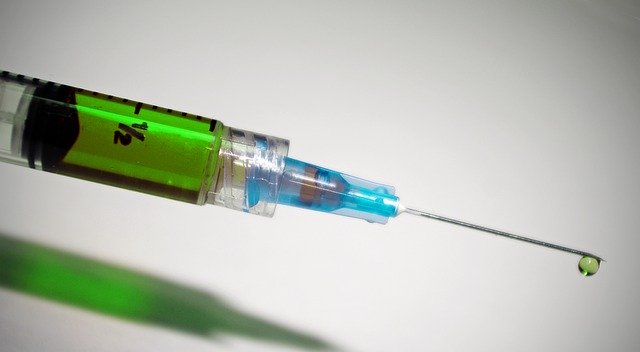Vaccines are medications that are used to make people immune to certain diseases. They contain the bacteria or virus, or parts of the bacteria or virus, that causes illness and disease.
The bacteria or virus is included in the vaccine so that the immune system can be taught to recognize and produce antibodies against it if a person is exposed to it naturally, without the person ever experiencing any symptoms of illness or disease.
There are four main types of vaccines that act in different ways:
- Live-attenuated vaccines
- Inactivated vaccines
- Subunit, recombinant, conjugate, and polysaccharide vaccines
- Toxoid vaccines.
There is a risk of side effects with all vaccines, but some are less likely to cause side effects than others.
Live-Attenuated Vaccines
Live-attenuated vaccines inject a live version of the germ or virus that causes a disease into the body. Although the germ is a live specimen, it is a weakened version that does not cause any symptoms of infection as it is unable to reproduce once it is in the body.
Live-attenuated vaccines can be made to create immunity against viruses or bacteria, but they are more commonly used for viruses.
This type of vaccine works by allowing a virus or germ to reproduce enough for the body to make memory B-cells, which are a type of cell that can recognize and remember a virus and generate an immune response against it for many years after their initial response.
Live-attenuated vaccines trigger an immune response that is similar to what would occur during a natural infection, but the person is not able to pass on the virus to other people and will not become ill with the disease the virus causes.
A person will usually get lifelong immunity from disease through live-attenuated vaccines, and only one or two doses of the vaccine are usually needed to provide this immunity.
The types of diseases that live-attenuated vaccines are used for include:
- Measles, mumps, and rubella (MMR combined vaccine)
- Rotavirus
- Smallpox
- Chickenpox
- Yellow fever.
As a live version of the virus or bacteria is included this type of vaccine, medical advice should be sought before the vaccine is given as they may not be suitable for people with weakened immune systems or long-term health conditions.
Live-attenuated vaccines also need to be kept cool while they are stored, so they may not be suitable for use in environments where there is little access to refrigeration.
Inactivated Vaccines
An inactivated vaccine uses a strain of a bacteria or virus that has been killed with heat or chemicals. This dead version of the virus or bacteria is then injected into the body.
Inactivated vaccines are the earliest type of vaccine to be produced, and they do not trigger an immune response that is as strong as that triggered by live-attenuated vaccines.
Inactivated vaccines do not offer lifelong immunity and need topping up over time, but they may cause fewer side effects than live-attenuated vaccines.
The types of diseases that inactivated vaccines are used for include:
- Hepatitis A
- Flu
- Polio
- Rabies.
Subunit, Recombinant, Conjugate, and Polysaccharide Vaccines
Subunit, recombinant, conjugate, and polysaccharide vaccines use particular parts of the germ or virus. They can trigger very strong immune responses in the body because they use a specific part of the germ.
Although the immune responses are strong, these types of vaccines may need topping up over time. They are suitable for people with weakened immune systems and long-term health conditions.
These types of vaccines are used to create immunity against the following diseases:
- Hib (Hemophilus influenza type b)
- Hepatitis B
- Human papillomavirus (HPV)
- Whooping cough
- Pneumococcal disease
- Meningococcal disease
- Shingles.
Subunit vaccines
Antigens from the surface of the germ or virus are responsible for triggering an immune response in the body. Subunit vaccines isolate specific antigens from a germ or virus for use in the vaccine, and these antigens are specifically chosen according to the strength of the immune response they generate.
Subunit vaccines do not cause many side effects because they are so specifically targeted.
Recombinant vaccines
Recombinant vaccines are made through genetic engineering. The gene that creates the protein for a bacteria or virus is isolated and placed inside another cell’s genes. When that cell reproduces, it produces vaccine proteins that mean the immune system will recognize the protein and protect the body against it.
Conjugate vaccines
Conjugate vaccines use two different components. Conjugate vaccines use parts from the outer antigen coat of the bacteria or virus, which are not strong enough to cause illness or generate an immune response in the body.
These weak antigen coats are linked to a stronger carrier protein using chemicals, and this combination of the weak antigen coat and stronger carrier proteins trigger the immune system to act more aggressively against the weak antigen.
Polysaccharide vaccines
Polysaccharide vaccines use sugar molecules (known as polysaccharides) from the outer layer of a bacteria or virus. These sugar molecules are chemically linked to carrier proteins and work similarly to conjugate vaccines.
Toxoid Vaccines
Toxoid vaccines use toxins created by the bacteria or virus to create immunity to the specific parts of the bacteria or virus that cause disease, and not the entire bacteria or virus. The immune response is focused on this specific toxin.
Toxoid vaccines do not offer lifelong immunity and need to be topped up over time.
Toxoid vaccines are used to create immunity against diphtheria and tetanus.
DNA and Recombinant Vector Vaccines
DNA and Recombinant Vector vaccines (also known as platform-based vaccines) are two new types of vaccines currently under development.
DNA vaccines include DNA that creates specific antigens from a germ. Once injected into the body, the DNA for the germ is reproduced by the body and is recognized by the immune system. The immune response will then protect the body against further infection and will continue to protect the future.
DNA vaccines are thought to be more effective than protein- or antigen-based vaccines because the antigen can sometimes be degraded or consumed by the body before the immune system can generate a full attack against the antigen.
Recombinant vector vaccines work as a natural infection and are good at training the immune system to recognize and attack germs. They work by reproducing a live virus that has been engineered to carry extra genes from the germ infecting the body.
The extra number of genes produce the proteins that the immune system needs to recognize and protect against.
Summary
There are four types of vaccines that are widely used against several diseases, but there are new types of vaccines being developed that may be cheaper and provide longer immunity than existing vaccines.
Some existing types of vaccines will cause more side effects than others, such as the live-attenuated vaccine, which may not be suitable for people living with long-term health conditions or people with a weakened immune system.
While some vaccines use live versions of a particular virus or bacteria, other vaccines can use only a part of the virus or bacteria to trigger an immune response, which may produce stronger immune action against the germ because of its specificity.
Medical advice should be sought before being vaccinated against a particular disease.








